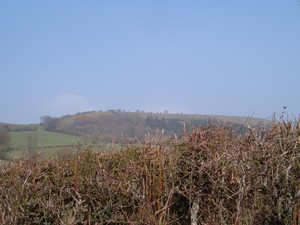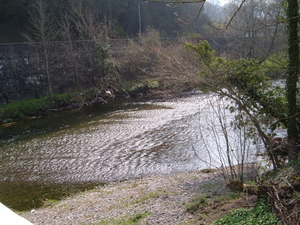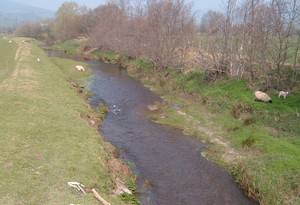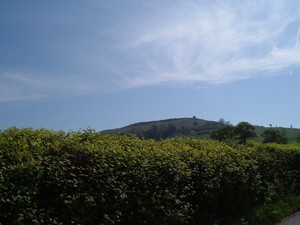The Last Battle
One of the most fascinating things about Caratacus's last great battle is that no one knows for sure where it took place. Tacitus describes it at length with details of the site, but how do we know where he got his information from? Perhaps he made up the detail in order to make his account sound more exciting, and to emphasise the brilliance of the Roman triumph when Caratacus's stronghold was so impregnable. Perhaps I'm being too cynical, but read what Tacitus says: ‘He selected a site where numerous factors - notably approaches and escape-routes - helped him and impeded us. On one side there were steep hills. Wherever the gradient was gentler, stones were piled into a kind of rampart. And at his front there was a river without easy crossings. The defences were strongly manned'. Later in the description he mentions the river barrier, the fortifications supplementing it, the overhanging cliffs. Nevertheless, he goes on to say, the river was apparently crossed without difficultly. And later after the Romans had demolished the ‘crude and clumsy' stone embankment, the ‘natives were driven to the hill tops'. (I have used Michael Grant's translation here, from the Penguin edition of Tacitus's Annals of Ancient Rome)
Turning to the history books, the guide books and the local accounts of the suggested battle sites I drove up and down the Welsh- English borders looking at the Caer Cradocs and other locations which claim to be the place, taking necessarily distant photos of iron age forts which sadly on inspection of the pictures turn out all to look very much the same: flat topped hills with or without visible ramparts in beautiful more or less lonely countryside. Atmospheric. Easy to visualise as hill top refuges. Not so easy to visualise in bloody battle mode. This is a conundrum not unlike the one of identifying the site of Boudicca's last stand. Surely there would be archaeological record of a place where tens of thousands of men have fought and died? If there is, it hasn't yet been found.
Traditionally there are about three main contenders for Caradoc's site. Elgar's choice was the Herefordshire Beacon, in the Malvern Hills.
![]()
Known as the British Camp, this has been dismissed by most historians as unlikely as the great River Severn although in sight from the top, is perhaps 5 or 6 miles as the crow flies to the nearest point ( which I would guess might be around Upton upon Severn) so doesn't seem to fit the bill.
The site preferred by The Ordnance Survey Complete Guide to the Battlefields of Britain by David Smurthwaite is Cefn Carnedd, near Caersws.

More isolated and on the edge of far more formidable mountains (behind me as I took the picture) this choice is perhaps easier to imagine, but here again the river does not seem to fit the bill. On the one side of the hill and quite close, there is the Severn,

but it is not at least these days very wide or deep and on the other it's tributary, Afon Cerist, which is even smaller, patrolled these days by nothing more formidable than attentive sheep. See below.

David Smurthwaite suggests Dolforwyn Castle as another possible site, also on the Severn. This medieval castle on a ridge high above the Severn near Mule (only a few miles from Newtown) certainly meets the bill when it comes to dramatic location. It has commanding views over the surrounding countryside in most directions - but maybe not the direction the enemy, be they Roman or English, would come from!
There are two Caer Caradocs in Shropshire, one at Church Stretton, a stunningly dramatic location with amazing views, and one at Knighton, high above the River Redlake, both formidable Iron Age hilltop sites. And a location near Wroxeter is a definite possibility.
Pen y Crug, near Brecon is another site I wondered about. The two villages below the great Iron Age fort are called Battle and Cradoc respectively. Too good a clue to ignore, I thought, with its neighbouring Roman settlement above the Usk - but according to the local history the battle and Cradoc concerned are 11th century. Pity, because the countryside seems to fit. See below:

Why do the experts dismiss the River Wye as the river Tacitus described? To my mind, in south Wales the Wye is deeper and more dramatic than the Severn and would provide far more of a barrier to an army. Just look at the countryside! In the end I gave up trying to decide which one was The Site. I have seen quite a few of the many hill forts and possible sites to choose from; some felt spooky; some lovely! I saw no ghosts the days I went. So, in the end I went for an imaginary composite. My Valley of Ravens, dedicated to the Celtic goddess of war could be any or none of them, but I hope it fits the place when one day it is located.





